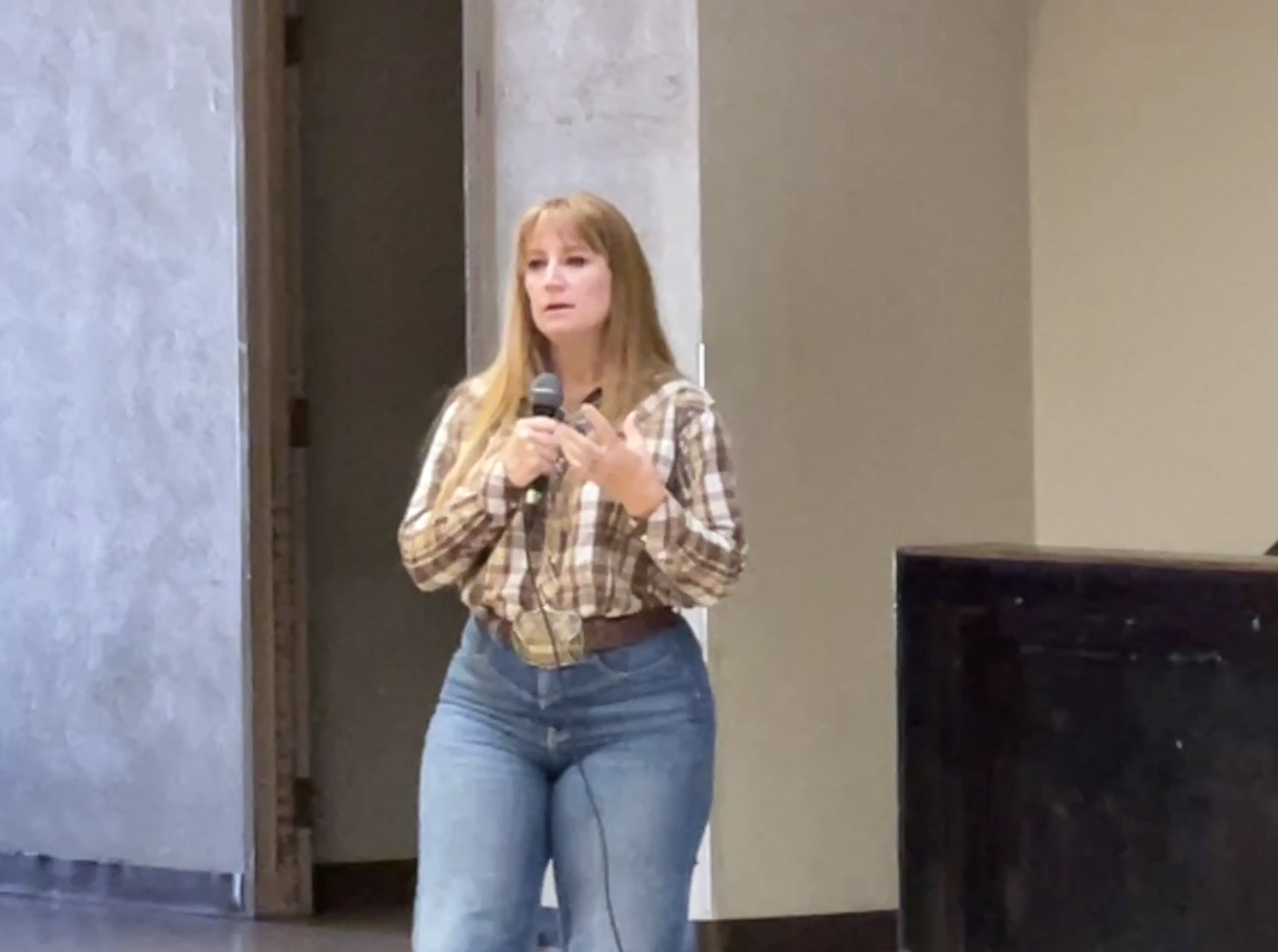
As dry conditions persist, many producers are struggling with sustaining their usual cow herd numbers. Senior Farm and Ranch Broadcaster, Ron Hays, visits with Oklahoma State University Extension Specialist for Rangeland and Ecology, Dr. Laura Goodman, about pasture and range management strategies to optimize forage growth for the cow herd.
“With the patch burning, we are just burning one portion of the pasture at a time,” Goodman said. “We are allowing those animals to have access to the whole pasture immediately following the burn. Because of the regrowth that happens after the burn and the really high-quality forage that regrows, those animals are really attracted to that area.”
Burning one area at a time, Goodman said the animals can then be moved around and will naturally select the recently burned area to graze. By grazing the recently burned areas, other parts of the pasture are left alone so that forage can be stockpiled for a couple of years if needed, and can be utilized during drought for grazing, she added.
With burning, Goodman said many people worry about what will happen if it doesn’t rain. Goodman said it eventually will rain, and the grasses will be well adapted to burning and grazing.
“We know that the fire can help to stimulate some hormones in that plant that increases budding and tillering, so they grow more when they are burned versus when we only graze them,” Goodman said. “The main thing that is limiting our forage production in Oklahoma is woody plants and trees taking over areas that weren’t forests or woodlands previously. Historically, that is what happened across Oklahoma is that it burned really regularly. That was what killed our Eastern redcedar and kept it from growing in areas that were prairies.”
Burning is not only extremely important for the productivity of rangelands for livestock producers and the livelihoods of rural communities, Goodman said, but it is also important for many species of wildlife.
“We know that our grassland birds are just plummeting and that is because of these trees taking over,” Goodman said.
“Our ranchers that are keeping their pastures as grasslands are really doing us an amazing service,” Goodman said. “There has been some really interesting research from Oklahoma State finding that the water availability in the soil and then the runoff to feed our streams and our stock ponds and stuff is dramatically increased by as much as four and a half times as much water available when you cut all of those cedars off of your pasture.”
In many cases after a drought, Goodman said, we try to restock quickly by keeping a lot of our heifers and purchasing more bred cows or heifers. Research shows that building back the herd slowly and continuing to sell cows and heifers while prices are high immediately following the drought will make more money long-term, she added.
“If we are spending a lot of money when cows are expensive or keeping a lot of heifers when they are worth a lot, that can actually be detrimental to us over the long term versus trying to build our herds back more slowly and only keeping our normal number of heifers,” Goodman said.
Click the LISTEN BAR below to hear more from Ron Hays and Laura Goodman on optimizing forage growth to prepare for dry conditions.
The Beef Buzz is a regular feature heard on radio stations around the region on the Radio Oklahoma Network and is a regular audio feature found on this website as well. Click on the LISTEN BAR below for today’s show and check out our archives for older Beef Buzz shows covering the gamut of the beef cattle industry today.















